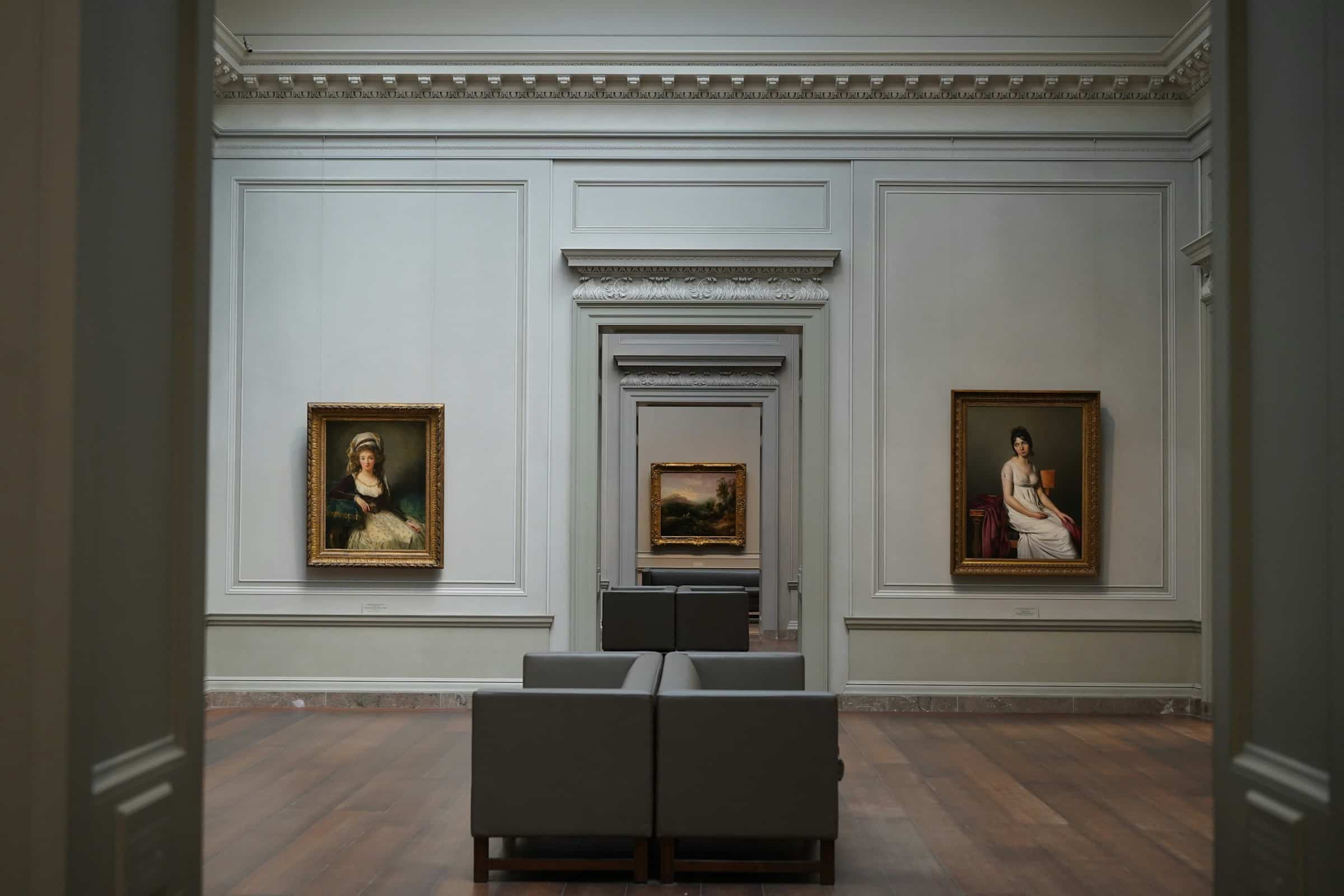Imagine walking through the hallways of your favourite museum, engrossed in exploring its treasures. Suddenly, a 3D hologram of a historic figure materialises right before your eyes, presenting a riveting tale of their life. Welcome to the future of museum visitation, where artificial intelligence (AI) is all set to enhance the interactive experiences, infusing life into static displays.
As the digital age advances, our expectations of technology and its potential to transform how we consume content and interact with the world have grown. The cultural heritage sector is not spared from this shift. Museums are often seen as gateways to the past, but they are increasingly becoming showcases for the future. With AI, they have the opportunity to redefine the visitor experience and engagement.
A lire également : How Can AI Enhance the Operational Efficiency of UK’s Postal Services?
Immersive Experiences with Digital and Virtual Reality
Traditionally, museums relied on static displays with placards describing the exhibits. However, this approach often fails to captivate the younger audiences who are digital natives. This is where the use of digital technologies and virtual reality can help transform the way artefacts are presented, offering an immersive experience to the visitors.
AI technologies can create virtual reality experiences that allow visitors to explore the museum and its exhibits in a virtual environment. Imagine being able to walk through an ancient city, experiencing its architecture, culture, and life as if you were actually there. AI can also help create digital replicas of artefacts, providing visitors with the opportunity to explore them in detail without risking damage to the original pieces.
Sujet a lire : What Are the Benefits of AI in Streamlining UK’s Tax Filing Processes?
Furthermore, AI algorithms can analyse visitor behaviour, enhancing their museum experience by recommending exhibits based on their interests and previous visitation patterns. This personalised approach enhances the visitor’s interaction with the museum’s content, creating a unique and immersive experience.
Interactive Exhibitions with AI
The key to an engaging museum visit lies in the ability to interact with the exhibits. Through AI, museums can create interactive exhibitions that not only inform but also entertain and engage the visitors. Integrating AI with augmented reality (AR), museums can bring artefacts to life, allowing visitors to interact with them in ways not possible before.
For example, AI could animate a painting to explain its history and significance or provide virtual tours guided by the artist themselves. Visitors could also interact with 3D reconstructions of artefacts, manipulating them in a virtual environment to get a better understanding of their form and function.
By making the exhibitions interactive, AI technology can help visitors connect with the content on a deeper level. It makes the experience more personal and memorable, enhancing the overall experience and encouraging repeat visitations.
Reinventing Art Galleries with AI
While the impact of AI on museums is significant, it has the potential to transform art galleries as well. AI can analyse and interpret art in ways that were previously impossible, providing new perspectives for visitors to appreciate the artwork.
AI can create virtual art galleries, allowing visitors to explore art collections from around the world without leaving their home. It can also create personalised art tours, recommending artwork based on the visitor’s preferences and interests.
Moreover, AI can be used to create new forms of art. AI algorithms can analyse thousands of artworks and generate new pieces based on the styles and techniques identified. This allows visitors to not only view art but also understand the creative process behind it.
AI and Cultural Heritage Preservation
One of the significant challenges for museums and cultural institutions is the preservation of artefacts. With time, even the best-preserved pieces can suffer damage, leading to a loss of cultural heritage. AI can play a pivotal role in preserving cultural heritage for future generations.
AI can be used to analyse and predict the deterioration of artefacts. It can help identify areas of concern before they become significant problems, allowing for timely intervention and preservation. Additionally, AI can create digital replicas of artefacts that can be used for research and education without risking harm to the originals.
Furthermore, AI can be used to digitise cultural heritage. It can analyse and catalogue artefacts, making them accessible to researchers and the public. This not only assists in their preservation but also broadens the audience for these artefacts, ensuring that our cultural heritage continues to be appreciated by future generations.
In conclusion, the potential applications of AI in enhancing the interactive experiences in UK museums are vast and exciting. Through immersive digital and virtual reality experiences, interactive exhibitions, reinvention of art galleries, and preservation of cultural heritage, AI is well on its way to revolutionising the museum experience.
Mixed Reality in Museum Education
Mixed reality, a blend of physical and digital worlds, is another AI-driven trend set to revolutionise the museum experience, particularly in the area of education. Museums have traditionally served as centres of learning, offering unique insights into history, nature, art, and science. However, the static nature of exhibits can sometimes limit the depth and extent of learning. With mixed reality, a more engaging, experiential form of learning is made possible.
Using artificial intelligence and augmented reality, museums can create mixed reality exhibits that superimpose digital information onto the physical world. This technology can be used to overlay historical context or scientific explanations onto exhibits. For instance, a visitor looking at a dinosaur fossil in a natural history museum could see a life-sized, moving dinosaur in its natural habitat, all through their mobile device or a dedicated mixed reality headset.
Mixed reality can also facilitate interactive learning. Imagine a child learning about the solar system in a science museum. Through mixed reality, they could virtually ‘hold’ a planet, see its rotation, and observe its relation to other celestial bodies in real-time 3D, making the learning experience much more intuitive and engaging.
Moreover, AI-based mixed reality can adapt the learning experience to suit the individual visitor. Using machine learning algorithms, the system can assess the visitor’s level of understanding or interest and adjust the complexity and depth of information accordingly. This personalised approach can significantly enhance the learning experience in museums, making it more enjoyable and effective.
The integration of AI in museums and cultural institutions is no longer a distant future, but an unfolding reality. From virtual reality tours to mixed reality educational experiences, AI is poised to redefine the way we experience museums. By making the visitor experience more immersive, engaging, and personalised, AI is not only enhancing the appeal of museums but also deepening our connection with our cultural heritage.
The potential of AI in museum experiences goes beyond just entertainment. It offers unprecedented opportunities for education, research and the preservation of cultural heritage. As AI continues to evolve, we can expect even more innovative applications that will further transform our museum visits.
However, the adoption of AI in museums also presents new challenges, such as the need for significant investment in digital technologies and app development, and the need to ensure that these immersive technologies are accessible to all visitors. As museums navigate these challenges, the ultimate goal remains to use AI to offer enriching and inspiring experiences that celebrate and preserve our rich cultural heritage.
As we move forward, the dialogue between AI and the UK’s museums and galleries will continue to evolve, and the possibilities for this partnership are vast and exciting. The future of the museum experience is here, and it’s powered by artificial intelligence. From immersive, interactive exhibits to the preservation and appreciation of our cultural heritage, there’s no doubt that AI will play a significant role in shaping the future of our museums.






